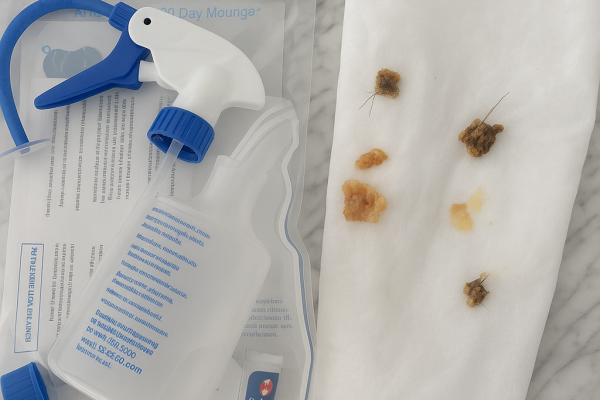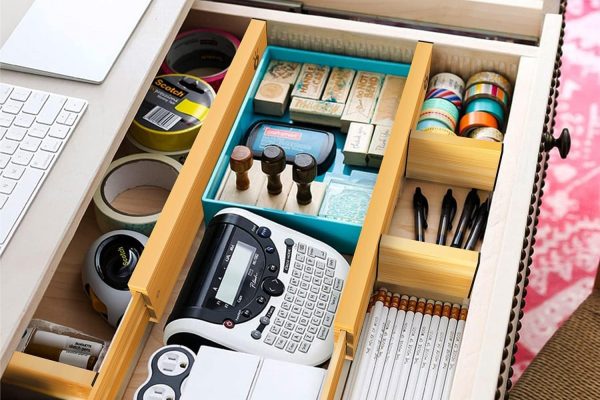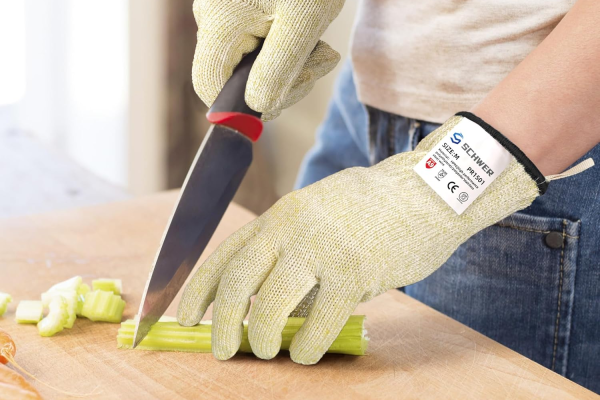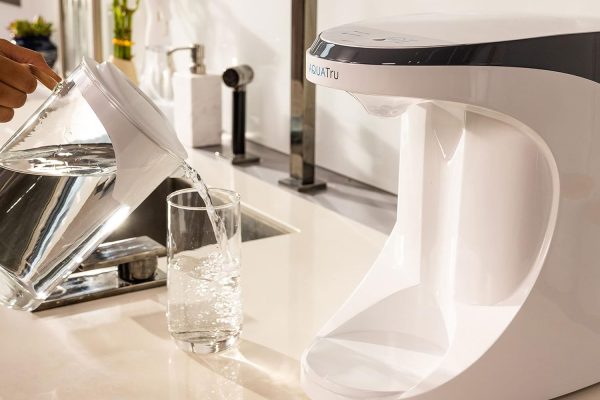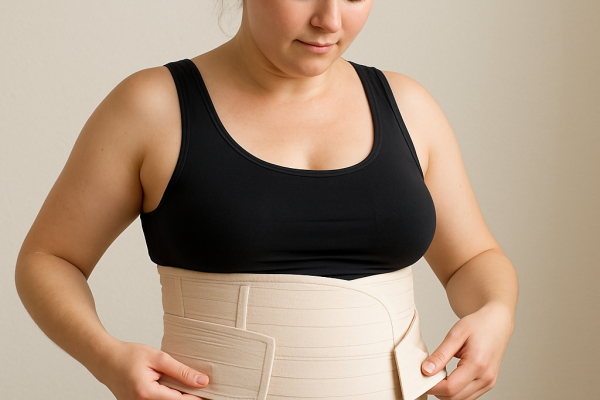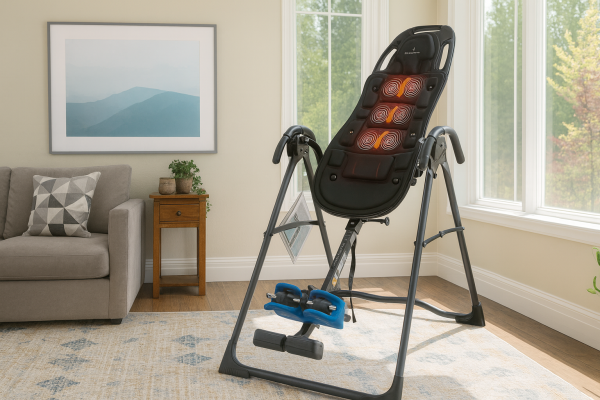 Your smartphone notifies you. Another social media post shows someone’s six-week transformation—visible waist reduction, defined abs, tighter thighs. The caption reads: “Red light therapy changed everything.”
Your smartphone notifies you. Another social media post shows someone’s six-week transformation—visible waist reduction, defined abs, tighter thighs. The caption reads: “Red light therapy changed everything.”
You’ve probably seen these posts. You’ve likely wondered: Does this actually work, or is it just marketing hype?
The honest answer is more nuanced than a simple yes or no.
Red light therapy (RLT), technically called photobiomodulation, has legitimate scientific support for reducing localized fat. The key word here is localized. This isn’t a magic solution for weight loss. But for targeted body contouring when combined with proper nutrition and exercise, the clinical evidence is real.
The catch? Most people buy the wrong devices.
What Red Light Therapy Actually Does (And Doesn’t Do)
Red light therapy uses specific wavelengths of light—typically 600 to 1,000 nanometers—to trigger cellular changes. When these wavelengths penetrate your skin, they’re absorbed by an enzyme called Cytochrome c Oxidase in your cells’ mitochondria.
This absorption does something important: it increases your cells’ energy production. Specifically, it boosts ATP (adenosine triphosphate), the molecule that powers all cellular functions. More energy means your cells work better.
But here’s the critical part for fat loss:
When RLT targets fat cells (adipocytes), it triggers a process called lipolysis. Your fat cells begin releasing their contents—fatty acids and glycerol—into surrounding tissue. The cells physically shrink. This creates inch loss and circumference reduction in treated areas.
RLT doesn’t melt fat or destroy cells. It makes cells release what they’re storing.
The released fatty acids then enter your bloodstream. Your body’s metabolic system processes and eliminates them—but only if you’re active and eating right. Without exercise and proper nutrition, those released fatty acids can simply be reabsorbed by your fat cells.
This is why RLT works best as part of a complete strategy, not as a standalone solution.
The Clinical Evidence: What Studies Actually Show
The research supporting RLT for body contouring is real but specific. Here’s what matters:
The Wavelength Factor
The 635-nanometer wavelength is the clinical gold standard. The FDA-cleared Zerona LipoLaser device, the first non-invasive technology approved for circumferential reduction of waist, hips, and thighs, used exactly this wavelength. Multiple clinical trials confirm 635 nm laser technology causes measurable lipolysis in subcutaneous (under-skin) fat.
Many affordable devices use 660 nm instead. While 660 nm offers skin benefits, it’s not optimized for fat cell triggering. This difference matters.
Power Requirements
Wavelength alone isn’t enough. Power output determines whether you get therapeutic results or just a pleasant warm feeling.
Clinical studies used high-intensity equipment. The Zerona device employed five laser heads, each emitting 17 mW of 635 nm light. Separate research showed that six minutes of 635 nm therapy at 10 mW intensity caused up to 99% of fat to release from adipocytes.
Consumer devices deliver significantly less power. This means longer treatment times and greater consistency requirements.
Real Results from Research

A comprehensive analysis of low-level laser therapy for body contouring found that one weekly session for six weeks resulted in an average circumferential reduction of 13 centimeters (approximately 5 inches) across the waist, hips, thighs, and upper abdomen.
That’s measurable. That’s significant. But it required consistency and proper protocols.
Understanding Device Specifications: The Numbers You Actually Need
When shopping for RLT devices on Amazon, most product descriptions are confusing. Manufacturers throw around terms like “medical grade” and list specifications that sound impressive but mean nothing without context.
Here’s what actually matters:
Irradiance (mW/cm²)
This is power density—the rate at which energy hits your skin per square centimeter. Higher irradiance means faster dose delivery and shorter treatment times.
The problem: Irradiance must be measured at a specific distance to be meaningful. A device claiming “50 mW/cm² without specifying distance is useless information.
For belts used directly against skin, you want at least 15-20 mW/cm² measured at contact. For panels used at distance, 50+ mW/cm² is preferable.
Fluence (J/cm²)
This represents total energy delivered per square centimeter. You calculate it by multiplying irradiance by treatment duration. Achieving therapeutic fluence is what actually produces results.
Clinical protocols typically target 1-4 J/cm² per session. With lower-power consumer devices, you need longer sessions to hit this target.
Wavelength Configuration
Single-wavelength devices are cheap but limited. Dual-wavelength devices (typically 660 nm + 850 nm) are common but lack the critical 630 nm for fat loss.
Quad-wavelength devices include 630 nm (or 635 nm) plus 660 nm, 810 nm, and 850 nm. The variety gives you:
- 630 nm for targeted fat reduction
- 660 nm for skin surface benefits
- 810 nm and 850 nm for deeper tissue penetration
Form Factor Matters: Belts vs. Panels
Belts and Wraps
Designed for hands-free, direct contact use around specific body areas (abdomen, hips, thighs). They’re convenient—you can wear one while working or checking email. Direct skin contact means maximum irradiance delivery to the target area.
The trade-off: Lower raw power output. Most belts deliver 15-20 mW/cm² versus 70+ mW/cm² for high-end panels. You compensate with longer sessions.
Panels
Standalone LED panels with significantly higher power output. The Hooga HG300, for instance, delivers over 73 mW/cm² at 6 inches. You stand or lie in front of the panel for your session.
Advantage: Faster dose delivery, full-body capability, higher power.
Disadvantage: Requires dedicated time, less convenient, less portable.
Top RLT Devices Available on Amazon USA
1. Hooga Health RLT Belt (Mid-to-Premium Range)
hooga Red Light Therapy Wrap [click to view…]
Hooga positions itself as a quality manufacturer with transparent specifications.
Specifications:
- Wavelengths: 660 nm and 850 nm (dual-wavelength)
- Irradiance: Approximately 15-18 mW/cm² (based on comparative analysis)
- Coverage: Targeted belt design for localized areas
- Battery: Rechargeable for cordless use
- Price: Approximately $299
The Reality: Hooga’s strength is specification transparency and reliable panels. Their belt offers decent power output and convenience. The limitation: Like most mid-range belts, it uses 660 nm rather than the optimal 630 nm for fat loss, meaning it’s more optimized for general wellness than targeted adipose reduction.
Customer feedback averages 4.2-4.5 stars. Users report consistent build quality and reliable operation, though specific fat loss results vary based on diet and exercise integration.
2. LifePro AllevaRed/AllevaRed Pro Belt (Budget-Friendly Option)
Lifepro Red Light Therapy Belt [click to view…]
LifePro targets the value market with aggressive pricing and aggressive warranty claims.
Specifications:
- Wavelengths: 660 nm and 850 nm (dual-wavelength)
- Irradiance: Typically unspecified or poorly documented
- Coverage: Full-body belt design
- Battery: Rechargeable
- Price: $189-$199
The Reality: LifePro’s major marketing claim is a “Lifetime Warranty.” The problem: Multiple customer reports indicate difficulty accessing warranty service. The warranty exists on paper but proves challenging to utilize when devices fail.
Without documented irradiance figures, assessing whether LifePro devices deliver therapeutic doses is speculative. The absence of 630 nm means fat loss isn’t the primary design goal.
Customer feedback reveals a common pattern: Devices function initially but often show technical failure within 6-12 months. Warranty claims frequently encounter support responsiveness issues.
Cost advantage: Yes. Reliability advantage: Questionable.
Comparative Specifications Table

Critical Safety Considerations
The Good News: RLT has an excellent safety profile. Unlike tanning beds or UV therapy, RLT doesn’t use ultraviolet radiation. Most research reports no significant side effects.
Essential Precautions:
Eye Protection: This matters most. Direct eye exposure to high-power RLT devices can cause permanent vision damage. The risk isn’t burns—it’s photochemical injury creating blind spots (scotomas). Always wear protective goggles unless the manufacturer explicitly designed the device for eye-safe use.
Skin Reactions: Rare but documented. High-intensity red light can cause localized redness or blistering. Start with shorter sessions and monitor your skin. Follow manufacturer distance and duration recommendations strictly.
Neurological Conditions: Individuals with photosensitive epilepsy should consult a physician before using RLT. While most devices use continuous light (not flashing), susceptible individuals face potential risk.
When to Avoid RLT:
- Active skin conditions requiring sun avoidance
- Certain medications causing light sensitivity
- Thyroid conditions (some literature suggests caution)
- Pregnancy (insufficient research exists; consult your doctor)
How to Actually Use RLT for Fat Loss Results
Protocol for Targeted Body Contouring:
Frequency: Daily or every other day for maximum effectiveness
Duration: 15-30 minutes per session, depending on device power output. Lower-power belts require longer sessions.
Placement: Direct skin contact. Remove clothing over the target area. Place the belt firmly against your skin to ensure maximum irradiance delivery.
Sessions per Week: 5-7 days weekly produces faster results than sporadic use. Research supporting the 13 cm circumference reduction used consistent weekly sessions.
Timeline Expectations: Results typically appear after 4-6 weeks of consistent use. Dramatic changes take 8-12 weeks.
Area Focus: Target one region at a time (abdomen, then hips, then thighs) rather than trying to cover your entire body in one session. Targeted sessions deliver better results.
Why RLT Alone Isn’t Enough
Here’s the uncomfortable truth: RLT makes fat cells release their contents. But your body won’t eliminate those released fatty acids unless you create the right conditions.
This requires three elements:
1. Physical Activity
Exercise—particularly cardio—metabolizes the released fatty acids. Without activity, your body simply reabsorbs them. You don’t need intense workouts. Brisk walking, cycling, or swimming for 30-45 minutes, 4-5 times weekly provides sufficient stimulus.
2. Nutritional Support
Your body needs adequate protein, balanced macronutrients, and a slight caloric deficit to support fat loss. Eating surplus calories while using RLT produces zero results. The released fat goes nowhere without proper nutrition driving metabolism.
3. Consistent Sleep and Stress Management
Poor sleep and chronic stress elevate cortisol, which signals your body to store fat rather than release it. Getting 7-9 hours nightly and managing stress through meditation, exercise, or other methods supports the fat loss process.
RLT amplifies these healthy habits. It doesn’t replace them.
Making Your Purchase Decision
If You Prioritize Results and Have Budget Flexibility:
Choose the Hooga Health belt. While it uses 660 nm rather than the optimal 630 nm, it offers:
- Transparent specifications
- Consistent build quality
- Reliable warranty service
- Battery convenience
- Adequate power output for therapeutic fluence with consistent use
Budget for 30-45 minute daily sessions to compensate for the 660 nm limitation.
If Budget Is Your Primary Concern:
The LifePro belt costs $100+ less and provides basic functionality. Understand that you’re accepting:
- Unclear specifications
- Documented reliability issues
- Warranty access challenges
- No guarantee of therapeutic dose delivery
This works as an experiment or for general wellness but shouldn’t be your primary choice for targeted fat loss.
The Panels Alternative:
If you want maximum power and fastest results, consider high-output panels like Hooga’s HG300 (approximately $189). The 73+ mW/cm² output dramatically reduces session times. Trade-off: Less convenience, requires dedicated space and time.
The Bottom Line
Red light therapy works for localized fat reduction. The science is solid. But it’s not a shortcut—it’s a tool that amplifies healthy habits.
The difference between success and disappointment comes down to three factors: choosing a device with documented specifications, committing to consistent use, and integrating RLT with proper nutrition and exercise.
Most people fail because they expect RLT to work alone. It won’t.
Those who succeed treat it as one component of a comprehensive approach to body composition change.
Ready to start?
If you’re serious about targeted fat reduction, grab the Hooga Health belt, commit to 30-minute daily sessions on your target area, clean up your nutrition, and move your body consistently. Check your measurements every two weeks—you’ll start seeing results within 4-6 weeks.
The transformation you see on social media? That comes from people doing all three things: using quality RLT, eating right, and staying active.
Stop looking for shortcuts. Start building systems.
Dora Decora is a biophilic interior design specialist and passionate blogger. With a deep commitment to integrating nature into living spaces, Dora specializes in creating environments that foster human-nature connections through thoughtful design elements. Her approach emphasizes sustainable materials, natural lighting, and organic patterns that enhance wellbeing and reduce environmental impact.
This post (https://homechroma.com/red-light-therapy-for-weight-loss) was originally published by Dora Decora on Home Chroma. As an Amazon Associates partner, we are compensated for all qualifying purchases.




